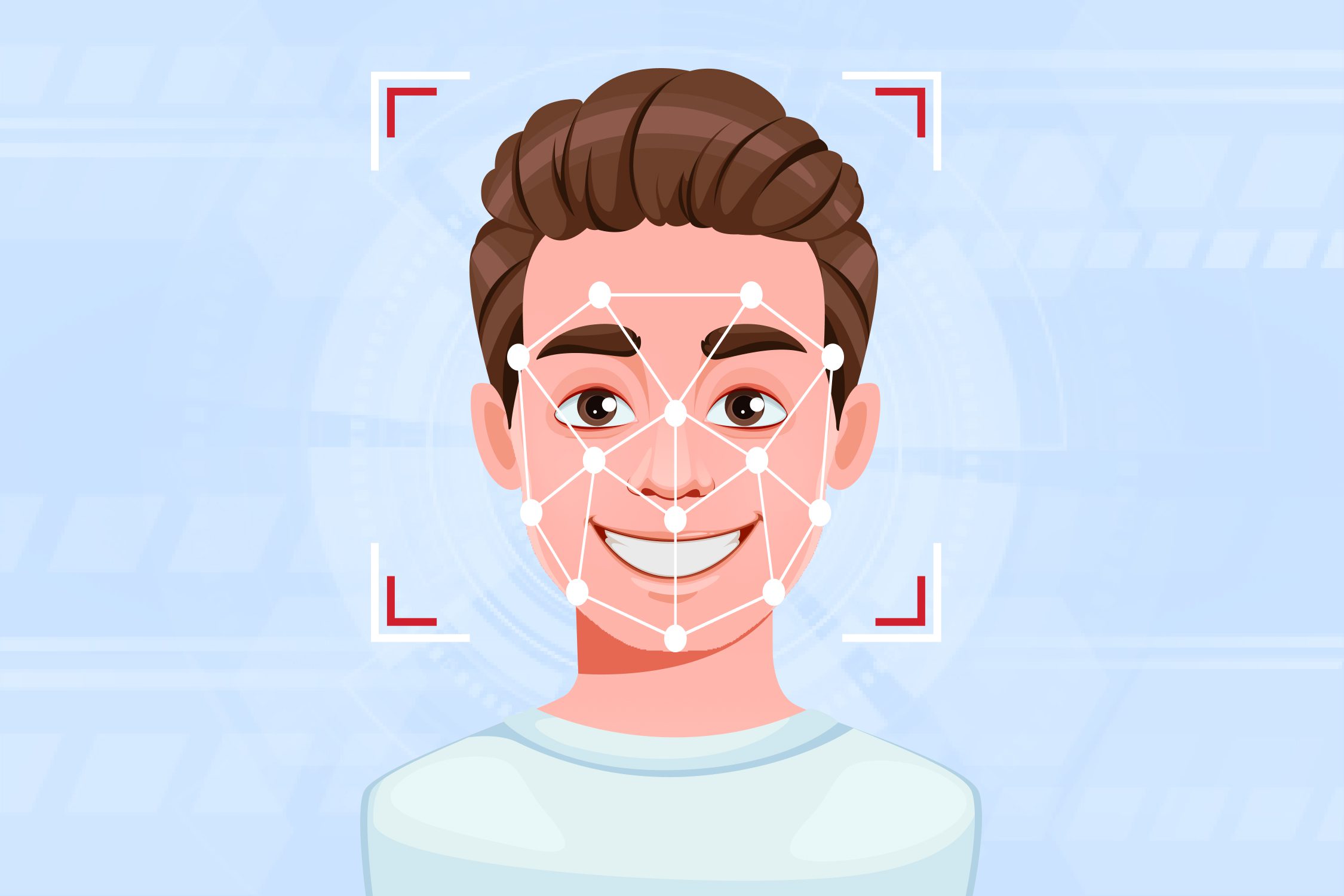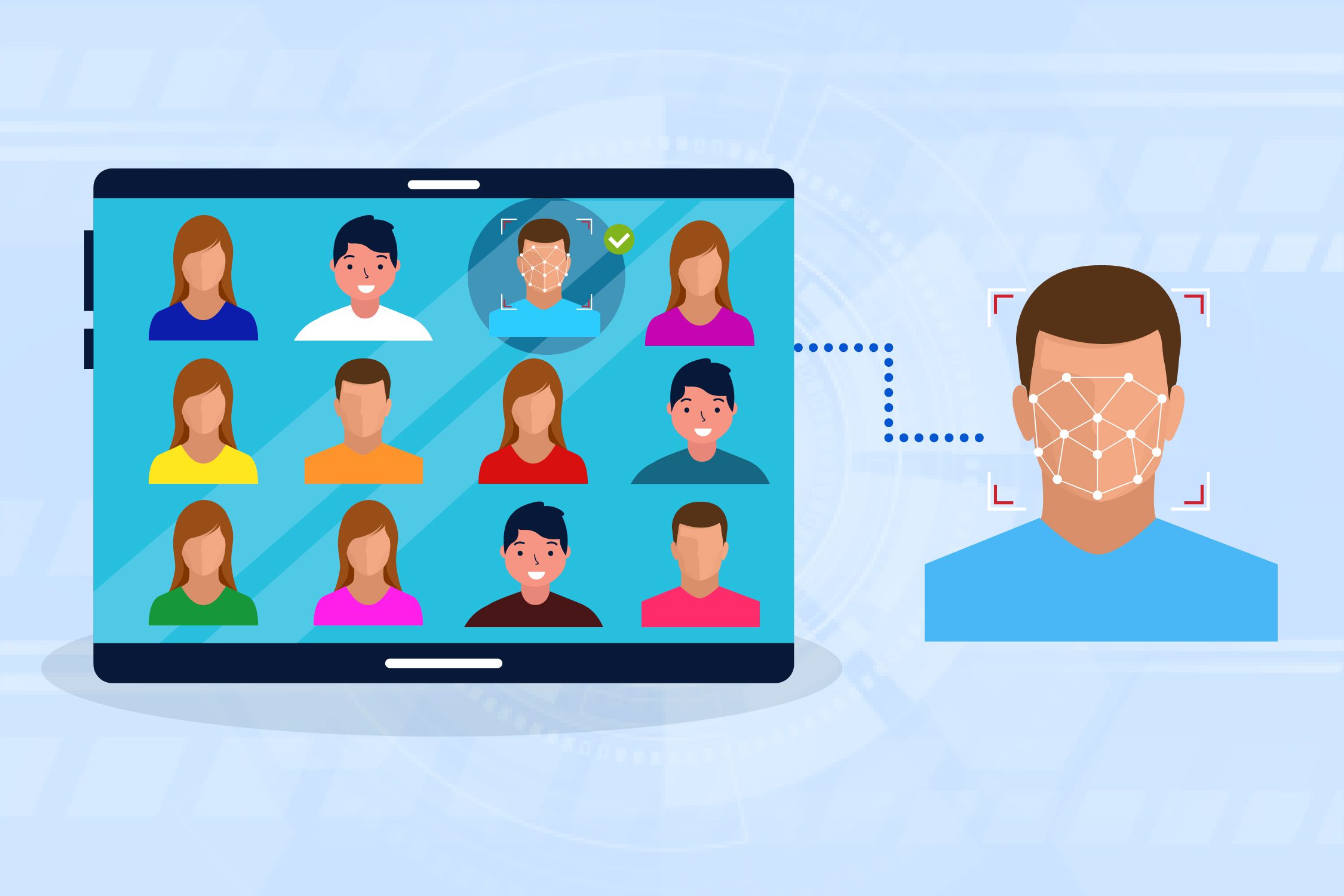
DeepLobeFebruary 9, 2022Artificial Intelligence , Computer Vision , Deep Learning
Face recognition technology is becoming more prevalent by opening up new opportunities for businesses and enterprises in terms of biometrics. It is by far the most advanced and relevant AI technology that can perform a wide range of tasks. Although the concept of face recognition was already invented during the 1960s, its technological breakthrough occurred in the 2010s due to the emergence of deep learning techniques. Initially, it was used only for security purposes.
Face recognition – How it Works
Face recognition is a type of biometric security that’s embedded in devices to allow people to identify themselves. This task is performed by mapping the vectors and features of a face and confirming them with an existing database.
Mapping of faces from an existing database involves a few steps:
Face detection
Face detection is the first step in the process of recognizing a face. Fast and accurate detection of the face is the first critical step to ensure the performance of the entire facial recognition process. A camera uses face detection to identify a target face. It can detect objects in its surroundings, such as a person walking or looking straight ahead.
Feature extraction
Following face detection, the software then maps the image to collect details such as the topography of the detected face. It also collects various measurements, such as the eye separation, the forehead-to-chin angle, depth of the eye socket, more sophisticated clusters of dimensions that define the contours of lips, cheekbones, ears, etc. The engines first extract an n-dimensional template from the image. This template is used for 1:1 face matching or 1:n face searching.
Matching a face 1:1 involves extracting a face and matching it with the same facial template from the database to check the facial template against the face on the identification and verify that both belong to the same person. A few most common examples in this scenario are Apple’s Face ID to unlock mobile phones and mobile banking services that allow users to login through face detection.

During a 1:n face search, the engines match the template against the ones in the database and confirm the identity of the target face. The most commonly used scenario of this kind of face search is for security and surveillance systems of companies that want to verify that the person in front of the camera belongs to the company.

Facial recognition and its influence
The rise of facial recognition has been widely attributed to the increasing number of people who regularly and purposefully use it to, for instance, secure and unlock their mobile phones. However, its ubiquity has allowed it to be applied, beyond unlocking mobile phones, in industries such as security, transportation, and hospitality – assisting in different aspects like customer relations, safety solutions, product expansion, etc.
Security
Smartphones have become one of the main platforms where people use facial recognition technology. People can install a facial recognition app or use a pre-built facial recognition tool on their phones to prevent unauthorized access. AI-equipped devices, like cameras, can also be used to either identify the face of the target or grant them access to sensitive information. This technology can also be used for employee verification and identification at the entry of office premises.
Retail
Understanding customers is very crucial for any business. And without having to collect personal information, facial recognition allows businesses to easily understand their customers. It can also identify people who visited their store, their reaction to the products and services, predict their emotions and provide helpful advice to the store manager. Face recognition analyzes the age, gender, emotions, statistics of age and gender distribution during different or specific hours and provides more insights on which products/services should be rendered at which specific time frames.
Healthcare
Facial recognition software streamlines the check-in process of in-patients at hospitals. By allowing the system to scan the face of the patient, it can speed up the process and provide a personalized experience for the patients, without needing to fill out any paperwork. Face recognition allows the unlocking of a patient’s medical records to specific personnel as and when needed, thus streamlining the patient-care process. It can also help identify and diagnose them. Another example is monitoring and identifying people who don’t follow COVID restrictions at the workplace or in public places. Through face mask detection, the system can notify both the customer and the employees about any violations.
BFSI
The use of facial recognition technology in the financial services industry has been widely promoted. It can help streamline the processing of transactions and save customers time from filling out forms. For example, the payment processes of financial services organizations have already incorporated this technology, with which, a customer can directly pay once their face is recognized and their details, like name, credit card number, address, etc., are automatically filled in. It can also prevent fraud, infringement, and hacking.
Automobiles
Personal automobiles, especially self-driving cars, have started incorporating facial recognition technology. Apart from monitoring the driver, facial recognition can be used to automatically adjust various features of a car, such as the mirror positions, the seat’s configuration, etc., when a driver enters the vehicle. Face recognition can also be used to replace a vehicle key to automatically open and start the vehicle. It can also alter the audio system’s settings and adjust the radio station’s volume by recognizing your audio preferences.
Law enforcement
By accessing the databases of known criminals, law enforcement agencies can instantly identify them using photos taken by security cameras. Customs and immigration officials have also started using facial recognition technology to improve their security measures. This technology identifies potential threats. For instance, banks can now prevent unauthorized access to their online accounts by using facial recognition. Even if a hacker tries to use a photograph of the owner, the system will detect that it’s not the real thing and an alert is sent to the authorities immediately.
The adoption of facial recognition technology is expected to make the world a better place, but it needs more education to make sure that its ethical standards are being followed. There are also various steps that the industry can take to educate the public about the benefits of facial recognition. Apart from that, it also needs to be regulated to ensure that its uses are ethical.
DeepLobe can help you with ethically implementing facial recognition technology in your business or organization. DeepLobe, a no-code ML platform, is a smart, scalable, cost-effective machine learning API as a service platform that helps enterprises build biometric-enabled facial recognition for a variety of end-user genders, ethnicities, ages, and more. Feel free to contact us for more information.
